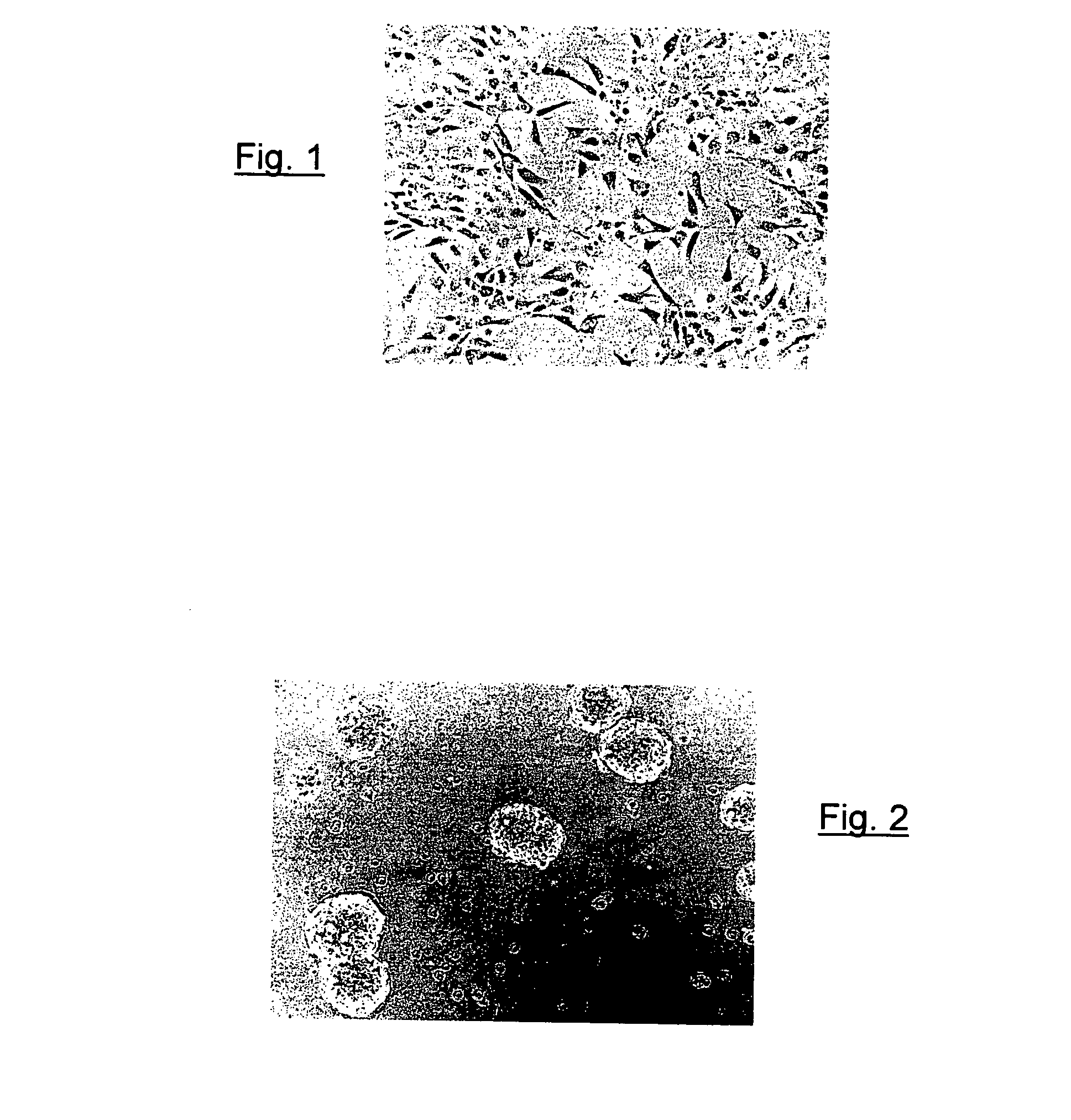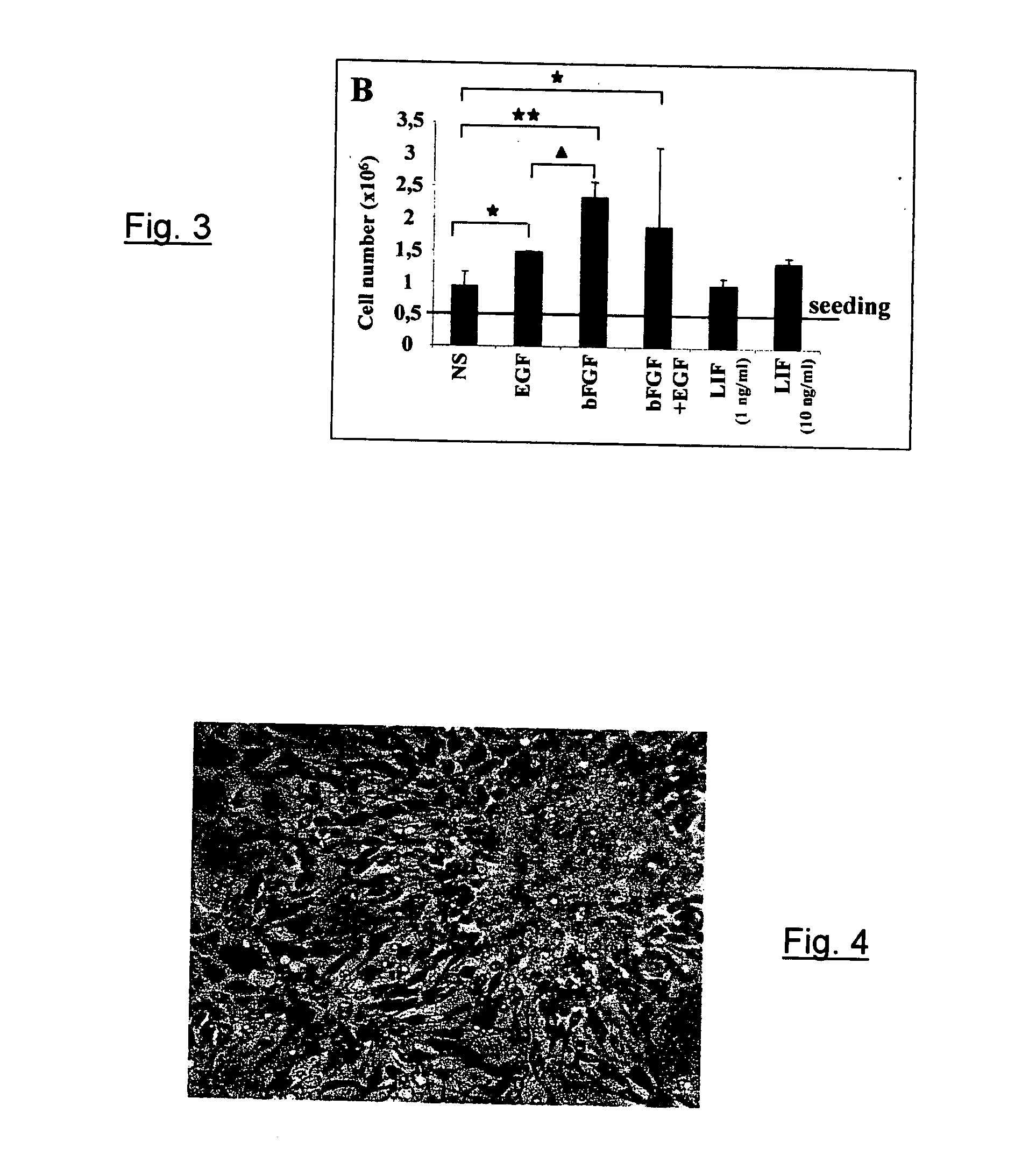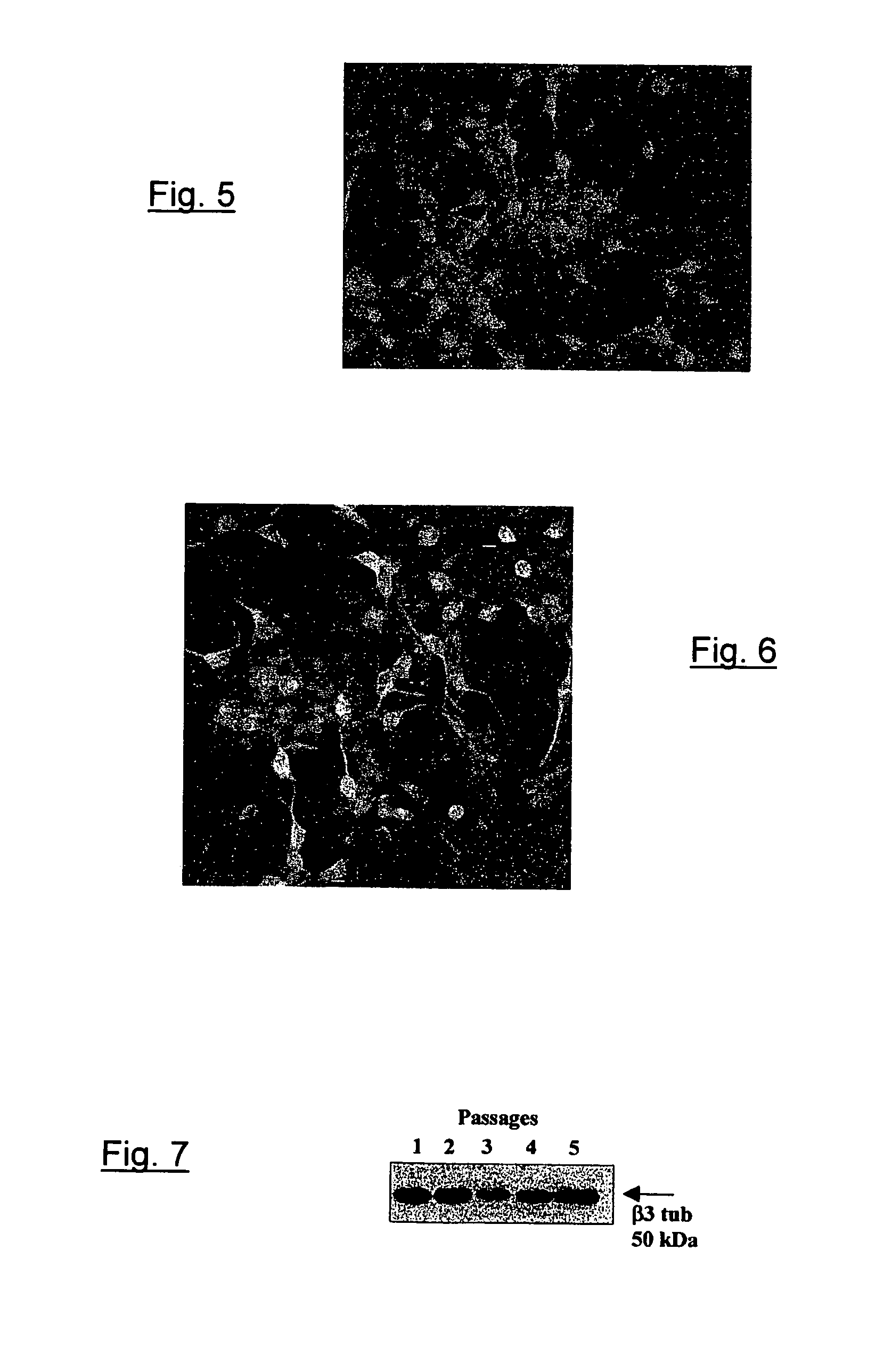Method for production of neurons from cells of a cell line
a cell line and cell line technology, applied in the field of human cell line cell line production method, can solve the problems of narrow prospects of the technique, small yield, and limiting the growth of neurons
- Summary
- Abstract
- Description
- Claims
- Application Information
AI Technical Summary
Benefits of technology
Problems solved by technology
Method used
Image
Examples
Embodiment Construction
[0051] The invention relates to the field of neurology and provides a new method for obtaining neurons, in which cells of the human embryonic teratocarcinoma line NT2 are cultivated into spherical aggregates then induced to differentiate into neurons after adhesion on a substrate.
[0052] In a preliminary step of this method, cells of the cell line NT2 are first cultivated in a classical way, into monolayers, in flasks having filtering plugs containing an Opti-MEM™ (trademark registered by the Life Technologies company) growth medium completed with 5% fetal calf serum, and 5 μg / ml Gentamicin™ (trademark registered by the Gibeo BRL company) at 37° C.
[0053] In order to maintain the line, cells cultivated into mono layers are dissociated twice a week into single cells with a 0.25% trypsin / EDTA solution and taken out at one third.
[0054] For the implementation of this method, NT2 cells cultivated into monolayers are retrieved and dissociated with the 0.25% trypsin / EDTA solution.
[0055] ...
PUM
| Property | Measurement | Unit |
|---|---|---|
| molecular weight | aaaaa | aaaaa |
| molecular weight | aaaaa | aaaaa |
| diameter | aaaaa | aaaaa |
Abstract
Description
Claims
Application Information
 Login to View More
Login to View More - R&D
- Intellectual Property
- Life Sciences
- Materials
- Tech Scout
- Unparalleled Data Quality
- Higher Quality Content
- 60% Fewer Hallucinations
Browse by: Latest US Patents, China's latest patents, Technical Efficacy Thesaurus, Application Domain, Technology Topic, Popular Technical Reports.
© 2025 PatSnap. All rights reserved.Legal|Privacy policy|Modern Slavery Act Transparency Statement|Sitemap|About US| Contact US: help@patsnap.com



